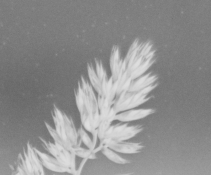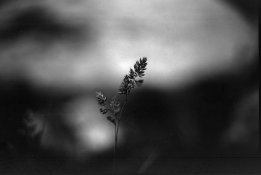grainyvision
Subscriber
So I've went out on a larp and bought a cheap 1000ft can of Kodak 2466 film, a high contrast, slow speed (~1 ISO) ortho cine film. The expiration printing on the can is 1985. It has no remjet or anything like that, maybe not even a real antihalation layer. Anyway I shot a test roll and developed it in a custom developer and wondering if the film or developer might be the blame here. The spots are white in the negative and most obvious in heavily exposed areas, as when inverted it looks like black spots in highlights. The spots are very tiny, but I think may cause problems when enlarging. The density of the negatives are extremely brown, hinting that the development was mostly on the surface of grains. When I processed a test strip in Ansco 130 to evaluate for fog and safelight sensitivity, the density was a good black and lesser exposed parts were quite olive green. I didn't keep that strip though and so no idea if the white spots appeared there too. The exact formula used:
* "EXG1" 1+1, 69F, 6m development
* 5ml Triethanolamine 99% (formulary)
* Glycin, 0.5g (dissolved in the TEA)
* 3g potassium carbonate
* to 500ml of water
After development was rinsed in water several times and put into TF-4 fixer, then more rinsing and a final wash of distilled water and photo-flo
Other than the peppering the negatives look quite nice, good tonality without too much contrast, fairly short scale that'd be ideal for printing, and very fine grain without losing any sharpness.
* "EXG1" 1+1, 69F, 6m development
* 5ml Triethanolamine 99% (formulary)
* Glycin, 0.5g (dissolved in the TEA)
* 3g potassium carbonate
* to 500ml of water
After development was rinsed in water several times and put into TF-4 fixer, then more rinsing and a final wash of distilled water and photo-flo
Other than the peppering the negatives look quite nice, good tonality without too much contrast, fairly short scale that'd be ideal for printing, and very fine grain without losing any sharpness.











 .
.

